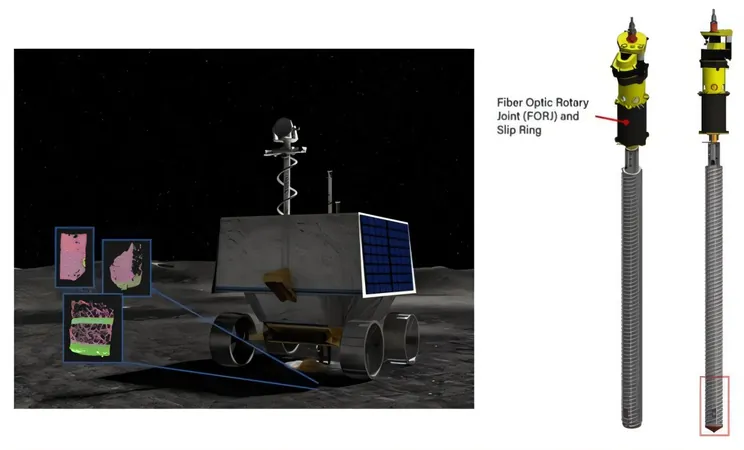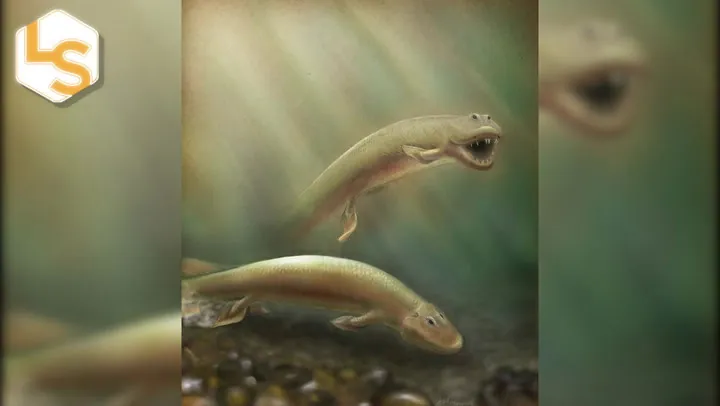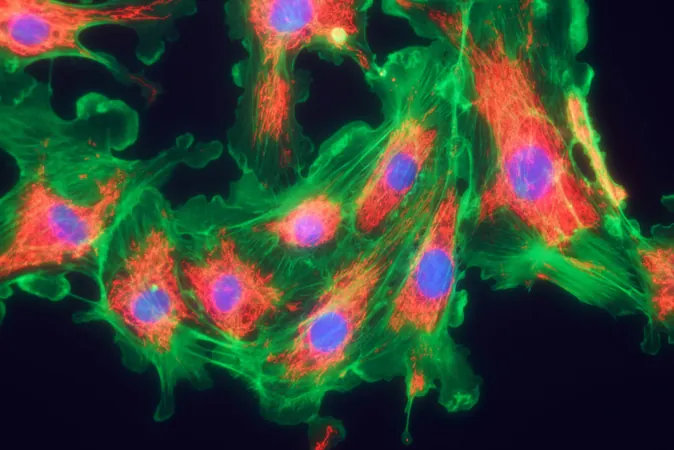
Unlocking the Secrets of the Solar System: Meet OptiDrill!
2025-05-07
Author: Ming
Revolutionizing Planetary Exploration
What if we could delve deeper into the mysteries of other planets without leaving a trace? At the recent 56th Lunar and Planetary Science Conference, researchers unveiled a groundbreaking instrument called OptiDrill, poised to transform in-situ analysis of planetary regolith across our solar system. This innovative technology is designed to create new avenues for sampling regolith— that all-important dust layer— and subsurface materials on celestial bodies, including the Moon and Mars.
Why OptiDrill Matters
Andrew Palmowski, a Senior Mechanical Engineer at Blue Origin, explained the driving force behind OptiDrill: 'Understanding the formation processes and water content of planetary bodies is vital for both scientific and future commercial endeavors.' The Moon's south pole, with its permanently shadowed regions, could become a treasure trove of resources like water ice. This substance could be pivotal for future astronauts, serving as drinking water, fuel, and even allowing oxygen production through electrolysis.
How It Works: The Technology Behind OptiDrill
OptiDrill employs a cutting-edge rotary-percussive drilling system that integrates multispectral microscopic imaging capabilities. This innovative combination allows the tools to work closely with the samples, capturing vital data sets that traditional methods may miss. Designed for various missions, it can be deployed on the Moon, Mars, asteroids, and icy worlds.
Learning from Our Past: Core Samples and Their Insights
The study highlighted how regolith on the Moon and Mars provides crucial insights into these celestial bodies' histories, including their geological and environmental aspects. The Apollo missions famously collected core samples that unveiled significant information about lunar geology, helping us piece together the Moon's history. However, existing technologies do face challenges, particularly in preserving the integrity of these samples.
Next Steps: Path to Implementation
Palmowski detailed the ongoing development of OptiDrill, noting that integration comes with substantial challenges. 'Creating a robust system suitable for the dynamic environment of space has been a primary focus,' he said. They aim to reach Technology Readiness Level 4 by late 2025, with eyes on further NASA funding to elevate the project.
Beyond the Moon and Mars: A Universal Tool for Exploration
OptiDrill’s potential extends beyond just our Moon and Mars. Other celestial bodies, like Jupiter’s moons Europa and Ganymede and Saturn’s Titan, could harbor subsurface oceans rich in secrets waiting to be unlocked. While robotic explorers have paved the way, the ability to directly analyze subsurface materials could be a game-changer in our quest to find extraterrestrial life.
The Importance of In-Situ Analysis
According to Palmowski, in-situ analysis is instrumental for life detection and prospecting vital resources. This method yields higher quality data compared to remote sensing, allowing scientists to refine their understanding of potential life-sustaining environments. 'OptiDrill will target various reflectance spectra down to the micron scale, grounding our orbital data and enhancing our exploratory capabilities on icy worlds,' he added.
The Future of Space Exploration—Bright and Full of Potential
As this project unfolds, OptiDrill stands as a testament to human ingenuity and determination in exploring the cosmos. With inventions like this, the possibilities are limitless. What secrets will we uncover next?






 Brasil (PT)
Brasil (PT)
 Canada (EN)
Canada (EN)
 Chile (ES)
Chile (ES)
 Česko (CS)
Česko (CS)
 대한민국 (KO)
대한민국 (KO)
 España (ES)
España (ES)
 France (FR)
France (FR)
 Hong Kong (EN)
Hong Kong (EN)
 Italia (IT)
Italia (IT)
 日本 (JA)
日本 (JA)
 Magyarország (HU)
Magyarország (HU)
 Norge (NO)
Norge (NO)
 Polska (PL)
Polska (PL)
 Schweiz (DE)
Schweiz (DE)
 Singapore (EN)
Singapore (EN)
 Sverige (SV)
Sverige (SV)
 Suomi (FI)
Suomi (FI)
 Türkiye (TR)
Türkiye (TR)
 الإمارات العربية المتحدة (AR)
الإمارات العربية المتحدة (AR)